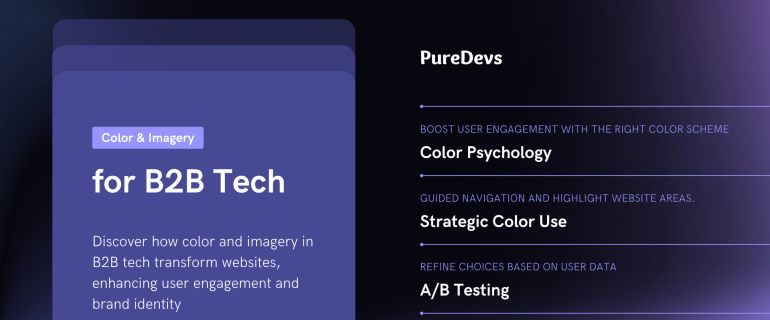In the fast-paced world of B2B technology, the visual appeal of your website can be a game-changer. Color and imagery are not just about aesthetics; they play a crucial role in user engagement, brand identity, and ultimately, in driving business success.
The Power of Color Psychology
Color psychology is vital in shaping user experience. The right colors can enhance mood, evoke emotions, and guide user behavior. For instance, blue often instills trust and professionalism, making it a popular choice in the tech industry. However, it’s crucial to choose a color scheme that aligns with your brand identity and resonates with your tech-savvy audience.
When selecting a color scheme, consistency is key. Stick to a palette that reflects your brand’s personality. Use contrasting colors for calls to action to make them stand out. Remember, color can also guide navigation – use it to highlight key areas on your website, making the user journey intuitive and efficient.
Imagery as a Storytelling Tool
Imagery is a powerful tool for conveying your brand’s story. High-quality, relevant images connect with your audience on a deeper level. Custom imagery often trumps stock photos, offering authenticity and uniqueness. Choose images that echo the innovative spirit of your audience – entrepreneurs and tech enthusiasts.
Do use images that reflect diversity and inclusivity. Don’t overuse stock photos that can feel impersonal. Do ensure images are high resolution and optimized for web use. Don’t clutter your website with excessive visuals.
Responsive Design
In today’s mobile-first world, ensure your color and imagery look great on all devices. Responsive design is not a luxury; it’s a necessity. Test how your colors and images appear on different screens to ensure a consistent user experience.
Never underestimate the power of A/B testing. This method lets you refine your choices based on real user data, ensuring your website resonates with your target demographic.
Aligning with Company Values
Your website should mirror your company’s values. Use color and imagery to emphasize innovation, efficiency, and reliability – key attributes in the B2B tech sector.
Stay updated with the latest trends in web design, but prioritize functionality and user experience. In sectors like FinTech and cybersecurity, compliance and security considerations may influence your aesthetic choices. Ensure your design choices do not compromise these vital elements.
Remember, the effective use of color and imagery is just one part of the larger puzzle of UI/UX best practices in B2B tech. A well-designed website can significantly impact user adoption rates and brand perception. As you progress in developing your website, keep these elements in mind to ensure a holistic and effective user experience.
In conclusion, the strategic use of color and imagery on your B2B tech website can significantly impact user engagement and brand perception. By understanding your audience’s needs and preferences, and aligning your design with your company’s values, you can create a compelling digital presence that not only looks great but also drives results. Remember, in the world of B2B tech, a well-designed website is not just a nice-to-have; it’s a crucial tool in your marketing arsenal.










